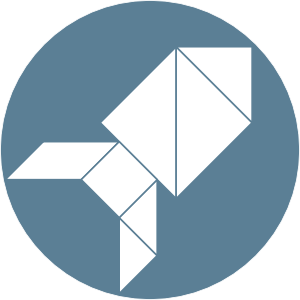EXPERIENCE
International market entry by M&A

The challenge
Any company aiming for fast international expansion immediately thinks about acquiring other companies. This is a major challenge for service companies, since lasting success depends on the synthesis of business model, integration, and culture – for all parties involved.
The way forward
imply having a strategic target will not lead to success on its own. The first requirement is honest answers to fundamental questions: Why make an acquisition? Under which criteria?
How will the company be integrated? What are the critical factors? But also: What does the market have to offer?
In the reflection of what the market has to offer it will become evident that buying a company is an iterative process. It involves weighing up, assessing, and asking what is possible. Company value can only be retained or enhanced if integration and development pursue a clear strategy. Tapping into integration synergies is not enough on its own.
We have gone down this road from market scouting to total integration many times. Frequently, opportunities and obstacles were difficult to separate. We can help differentiate between the two.
Value retention with post-merger integration

The challenge
After a company acquisition has been completed, the task ahead is not to lose customers and employees while realising the synergies that were identified.
The way forward
Now the theoretical calculations of the due diligence process must be turned into reality. Particularly when integrating larger companies, it is all about people and developing the value that was purchased.
There is always one critical factor: Human resource and organisational decisions. Who will be the “winner”, who is the “loser”?
Management executives face an extremely intensive and personally demanding time. While decisions on factual issues are generally accepted immediately, it is up to management executives to integrate customers and employees alike individually. In our experience, speed and plausible decisions are the only recipe for success. Once that has been achieved , management can begin developing commonalities and shaping the future.
From zero to go-live in eighteen months in China

The challenge
A customer was seeking a solution to the lack of European standards in his properties in China.
The way forward
The solution implied greenfield market entry onto the Chinese market. How could they achieve this? They travelled to China and saw an almost endless market where their own company was not participating at all.
Shareholders and business development department had to be convinced, but a local team also had to be found. The plan was to set up a joint venture with the customer and a Chinese partner in uncharted territory: different operating processes, unknown cost drivers, unexpected legal requirements, and an unfathomably complex path to company registration.
With the help of a highly efficient local team and a permanent view behind the scenes, we were able to achieve a go-live within 18 months of submitting the first offer.
Having a permanent presence on site and the close mandatory collaboration of the management were certainly decisive for this intercultural achievement.
Integrated facilities management for € 100+ mil.

The challenge
A big portfolio customer was changing its FM contract model from a fixed price to what it called an integrated “principal model”. In a short time, the running of hundreds of properties had to be switched to an “outcome-based” service level with key management figures and tough savings requirements.
The way forward
he speed of the transition was predominantly achieved by introducing new roles, for example “performance management”. Together, account management and service managers learned how to increasingly steer the portfolio by management figures and no longer “on demand”. Employees had to learn that errors are permitted – but must not be repeated. A list of potential savings (even at the cost of service elements and service level) that was drawn up systematically triggered the joint constructive discussion about potential savings that was necessary, but which had previously been blocked. Savings of more than 30% were the result.
Cross-border standardisation of operating processes

The challenge
An FM company had seen considerable efficiency benefits in the operating and administrative organisation in company areas with an Anglo-Saxon business culture. Now the company wanted to realise these efficiency gains in the regional organisations in Continental Europe as well.
The way forward
Efficiency figures alone are not sufficient to reconcile employees and formal conditions (e.g., the German Works Constitution Act!) with a “target operating model”. Although everyone can follow the core reasoning that “this can be done more efficiently”, the actual change process is the challenge. On the one hand, the goal and the way forward must be set out very clearly. On the other hand, country-specific regulations must be observed and works councils must be involved.
However, what essentially clinched the success of the transition was a combination of intercultural transfer and the management’s personal integrity. And the other key factors: Ongoing communication while at the same time involving as many employees as possible.
PropTech in FM: No innovation without a business model

The challenge
Innovative technologies create new business opportunities. Once an idea has germinated, the greater challenge is to develop a suitable business model and take it to market.
The way forward
Technology: Identifying individual consumers based on voltage fluctuations in the power network and measuring their consumption.
While the classical building technician was still sceptical about the underlying physics, the real challenge was that a new technology and a new business model (SaaS) cannot be developed within the existing business.
A “special purpose” company – in this case with venture capital financing – was established. A highly focused company management, together with the company’s own advisory committee, made it possible to develop the business at all from a technological and business aspect. Business opportunities and risks became visible in this “model venture” and became manageable. Within a corporation’s normal management structure, the company would have gone under.
Digital transformation of repetitive tasks

The challenge
How to simplify laborious chores through digitalisation: Paying and checking energy bills on behalf of a customer is one of the regular services provided by facilities managers. The multitude of individual invoices makes it a resource-intensive and low-margin business.
The way forward
Many companies already have automatic document recognition with scanning and OCR software in their accounts payable systems. This provides a basis for simple digitalisation of laborious tasks: A fully digital product was created by generating automatic routines and metadata for digital document checking for customer applications as well. Recurring deviation patterns could now be systematically recorded, and reminder and payment periods automatically monitored. This was a small but efficient application which was easy to implement because of the high level of standardisation.
If the system is used Germany-wide, the up-to-date market data gathered and the benchmarks it will provide will be useful side benefits.
How do I get 650 people around a table?

The challenge
Constructive communication with numerous people in decentralised locations: Major projects, for example the FM implementation of a large portfolio or company integrations, always carry the requirement to remain in constant dialogue with a large number of people.
The way forward
Modern technology can help: In conventional practice, this communication process would be negotiated using multiple interviews and a raft of workshops. Instead, we shifted to an interactive crowdsourcing campaign (https://clevertogether.com), with which participants are invited to a discussion platform where they could enter into intensive, protected and voluntary dialogue.
This very quickly gave a clear picture of where the real problems lay: documentation, support from assistants, data storage, system landscape, communication media, and a few other things besides.
By conducting the communication on the crowd platform, we were able to condense statements quickly, as questions efficiently and assign individual rooms for more detailed discussions.
The overwhelming success of the action plan was evident from the broad support, significantly shortened project duration, high resource efficiency, and an unusually high penetration rate of 60% among all persons involved.folg.
When the figures no longer show the reality of day-to-day business

The challenge
The post-merger integration of a newly acquired company in England came to a standstill. It transpired that the operating processes had become detached from the conditions portrayed in the P&L statement and balance sheet and were significantly less effective.
The way forward
It quickly became clear that it would not suffice to simply reorganise processes, introduce a more transparent ERP system, or restructure “hot spots” – like for example the technical service division.
In fact, the daily processes of operational and administrative functions had to be gradually understood and optimised. Of course, “a process” usually constitutes a broad spectrum of different depictions of comparable activities. In a countrywide organisation in which almost every employee interprets mandatory processes differently, it is difficult to achieve a standardised set-up.
The solution turned out to be the rigorous implementation of Six Sigma workshops: Using a generally accepted standard method enabled co-ordinated external support to be brought into the company fast and cost-effectively. Standardised processes emerged without having to go down the classical consultant road of detailed process manuals which ultimately no one reads.